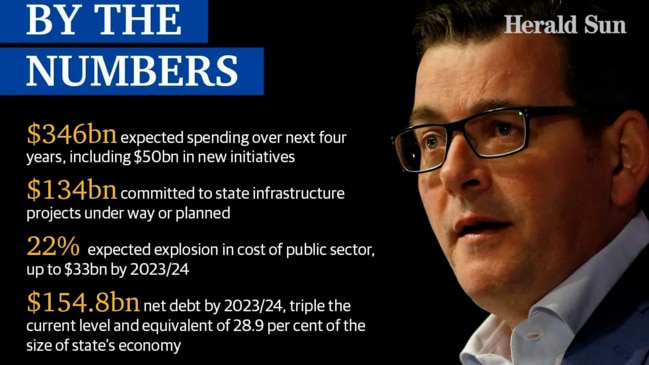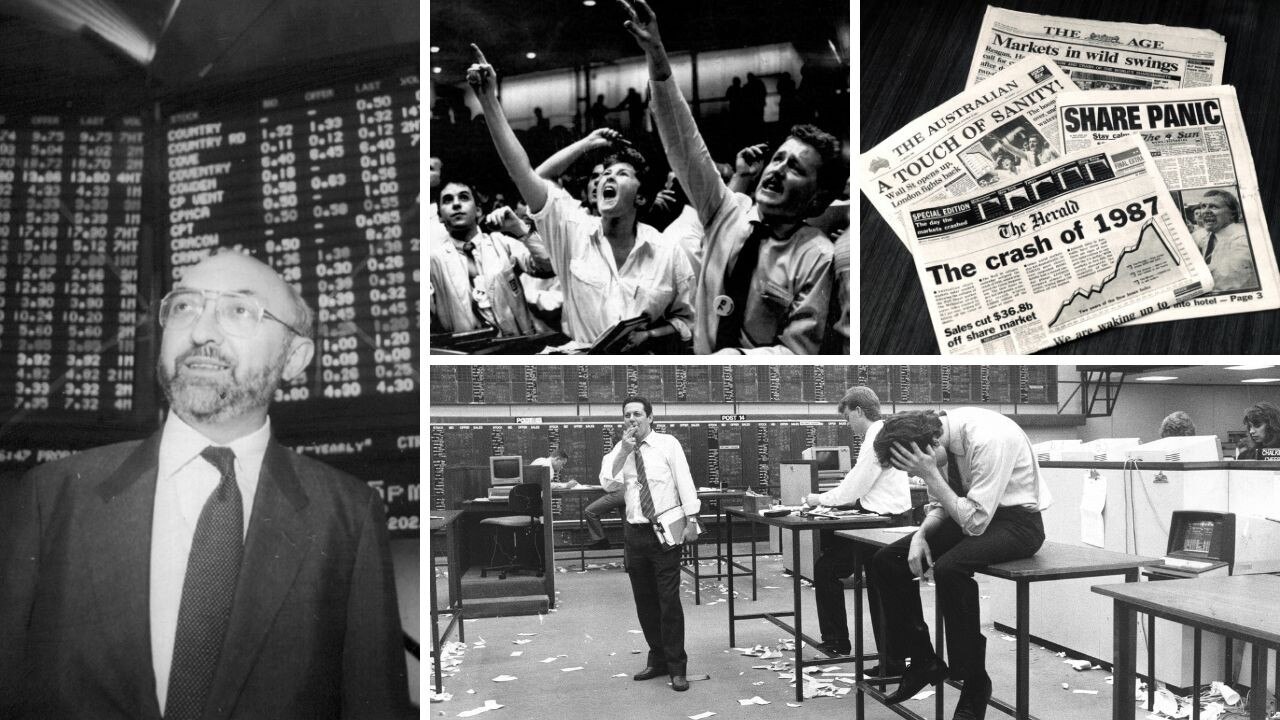Terry McCrann: Rocketing debt is free for now
It makes sense for governments to borrow big, but they should move to lock in interest rates, writes Terry McCrann.

Terry McCrann
Don't miss out on the headlines from Terry McCrann. Followed categories will be added to My News.
Three down, one to go.
Victoria joins New South Wales and of course the big daddy in Canberra laying out a future of huge budget deficits and exploding debt through the mid-2020s.
That leaves election-interrupted Queensland to be the last to detail its rivers of rich red ink, although as I noted last week, it’s already signalled its debt will also rocket past $100bn.
The big daddy’s net debt is projected to go from $491bn this year to $966bn in 2024. If you could get money on it actually at least topping $1 trillion, that would be money for nothing in my judgment: budget forecasts are always too optimistic.
The national debt is of course not going to stop at $1 trillion; even the (to repeat, too-optimistic) long-range budget so-called forecasts (more accurately known as fiscal fantasies) see the debt hitting $1.3 trillion by the end of the 2020s.
Again, a figure more like $1.5 trillion (and still rising) would be more realistic.
Victoria says its net debt will hit $155bn by 2024 and NSW has owned up to $104bn. After that they are supposed to start falling, at least in relation to the size of each state’s economy, and as the state budgets are supposed to move back into surplus.
Victoria says its budget deficit will fall from this year’s $23bn to ‘only’ $6bn in 2023-24; NSW claims its budget will be all-but back in the black by 2023-24, with a deficit of just $460m after topping out at this year’s $16bn deficit.
NSW says net state debt ‘will’ peak at around 16 per cent of the state’s GDP in 2024; Victoria is going to go close to (at least) doubling that – equal to 29 per cent Victoria’s GDP in 2024.

Now there is one big difference between the state and federal debt and deficits, which make the state ones (slightly) less concerning. I could have written ‘frightening’, but hey, why should I scare the horses, so to speak.
The exploding state debts are a mix of recurrent spending on public servants, services like hospitals, police etc and infrastructure.
The exploding federal debt is all recurrent spending on defence, healthcare and social welfare payments.
There’s virtually no spending on infrastructure at the federal level, so the debt is all ‘sunk money’. At least much of the state debt (all, in the case of NSW is offset by economy-supporting infrastructure.
Indeed, some of it could even be sold off to pay down debt – as we saw with Kennett’s $30bn sale of the state’s electricity industry in the mid-1990s.
But politics and ideology aside, there’d be no point in doing that now or indeed ‘anytime soon’ – now realistically defined as much of the 2020s. And the reason is interest rates.
Back in the 1990s any state that sold infrastructure assets could retire debt that was costing it anywhere up to 15 per cent a year.
Now, not only would it make no – repeat, no – sense to sell assets to retire debt costing close to zero in interest payments; it makes sense to do the exact opposite: borrow the near ‘free money’ and build and buy infrastructure.
Indeed, the RBA is effectively keeping the interest rate on state debt for terms shorter than three-years at around 0.2 to 0.3 per cent. No, that’s not 2-3 per cent, which would be cheap anyway, but just a tenth of that.
Yes, that ultra-cheap – effectively zero-cost – money only lasts for three years; but for longer terms the states still only have to pay around 2 per cent. And there are plenty of investors out there – local super funds and global investors – happy to get that return.
So, in 2023-24 when Victoria’s net debt hits $155bn, the interest bill is projected to be only a little over $3bn. NSW’s interest bill by then will be a similar $3bn and for the Federal Government, despite its $1 trillion debt, also ‘only’ $13bn.
For comparison, Canberra paid $11bn in interest in 2013-14 when the debt was only $200bn.
The big bottom line, though, is that those big debt levels are rock-solid guaranteed; extended low interest rates aren’t.
Yes, the rating agencies might downgrade our Triple-A – held by only the federal government and NSW and Victoria. The federal grading is being reviewed.
If the feds went down, so also would all the states, starting with the big-two. No state can be graded higher than Canberra because Canberra ultimately guarantees the state bonds.
But Canberra could stay at Triple-A while individual states go down. That now seems all-but certain for Victoria.
Short-term it would not hurt much at all, both because of what the RBA is doing, but also because of the massive liquidity in global markets – the trillions of dollars of loose cash looking for some sort of return. And all our bonds look very safe.
But that’s now; you do not want to have to go out in 2023-24 to borrow a trillion dollars, give or take the odd $100bn (for Canberra and for the two biggest states).
It is crucial – absolutely crucial – for all the governments to lock in as much debt as they can for at least ten years and preferably out to 20 and 30 years.
Yes, they will have to pay 1-2 per cent for such long terms as against more like 0.1-0.2 per cent for terms less than three years. But the money and the rates will be locked away – and, trust me, we will all be wanting to keep borrowing much more.
Originally published as Terry McCrann: Rocketing debt is free for now





